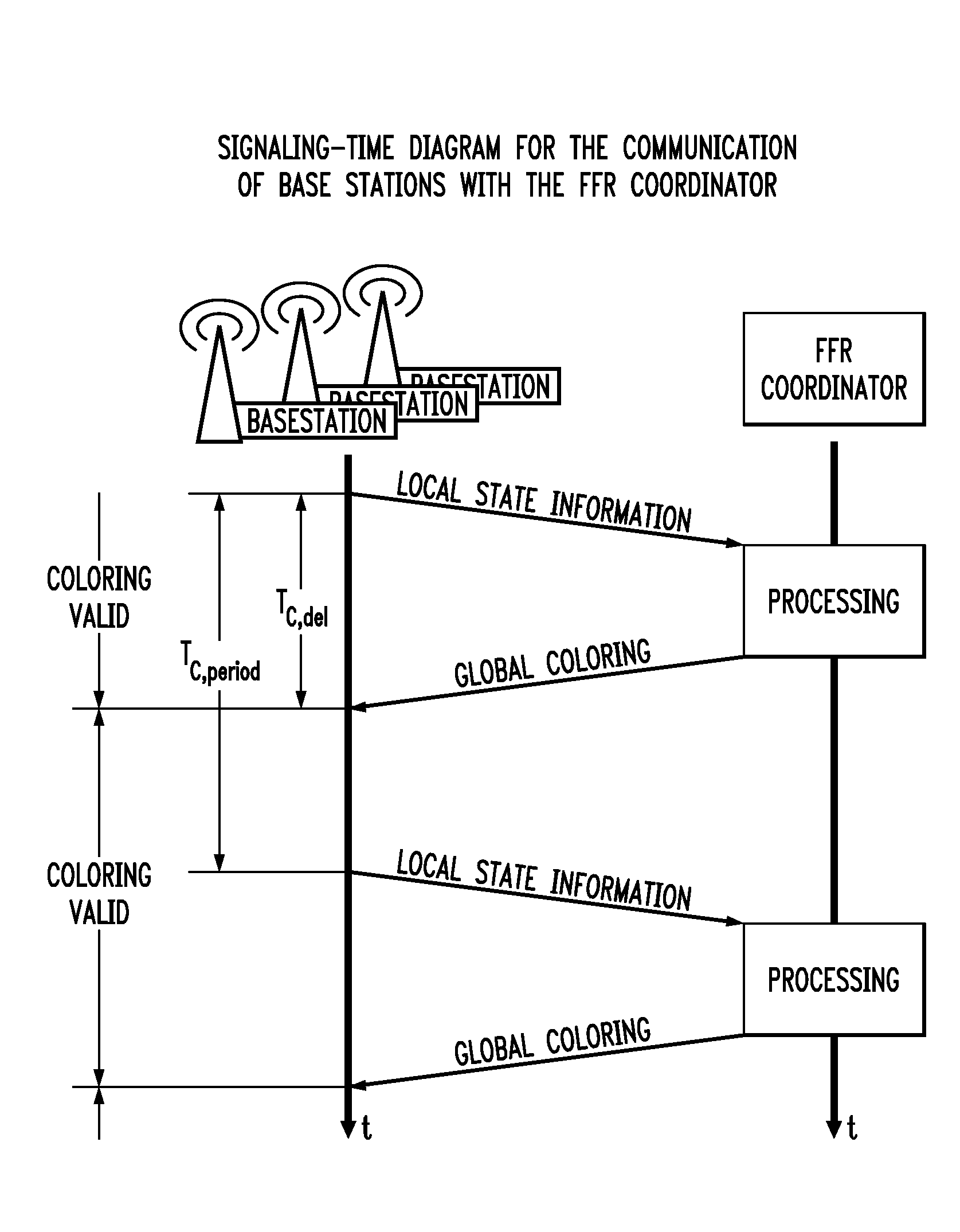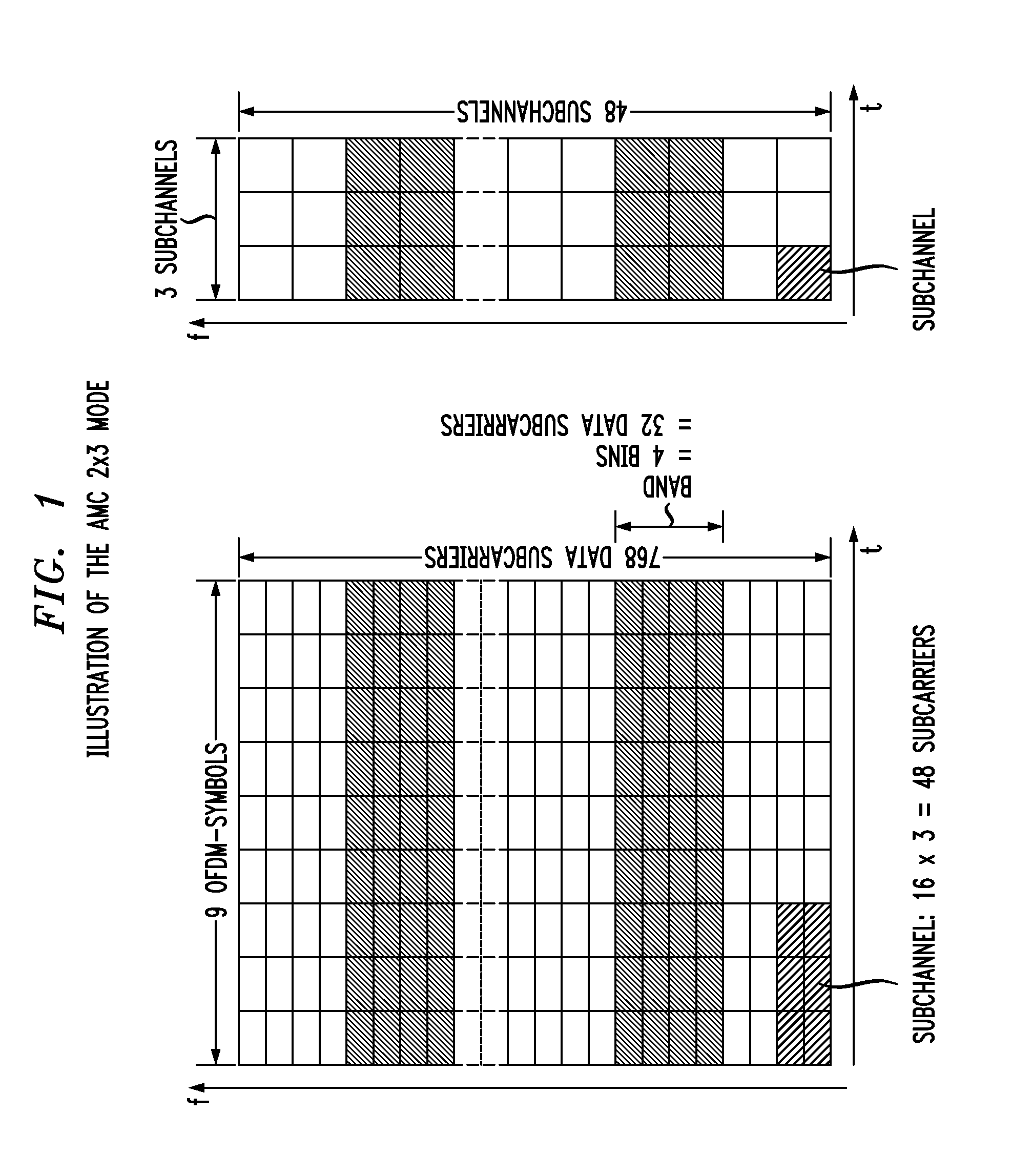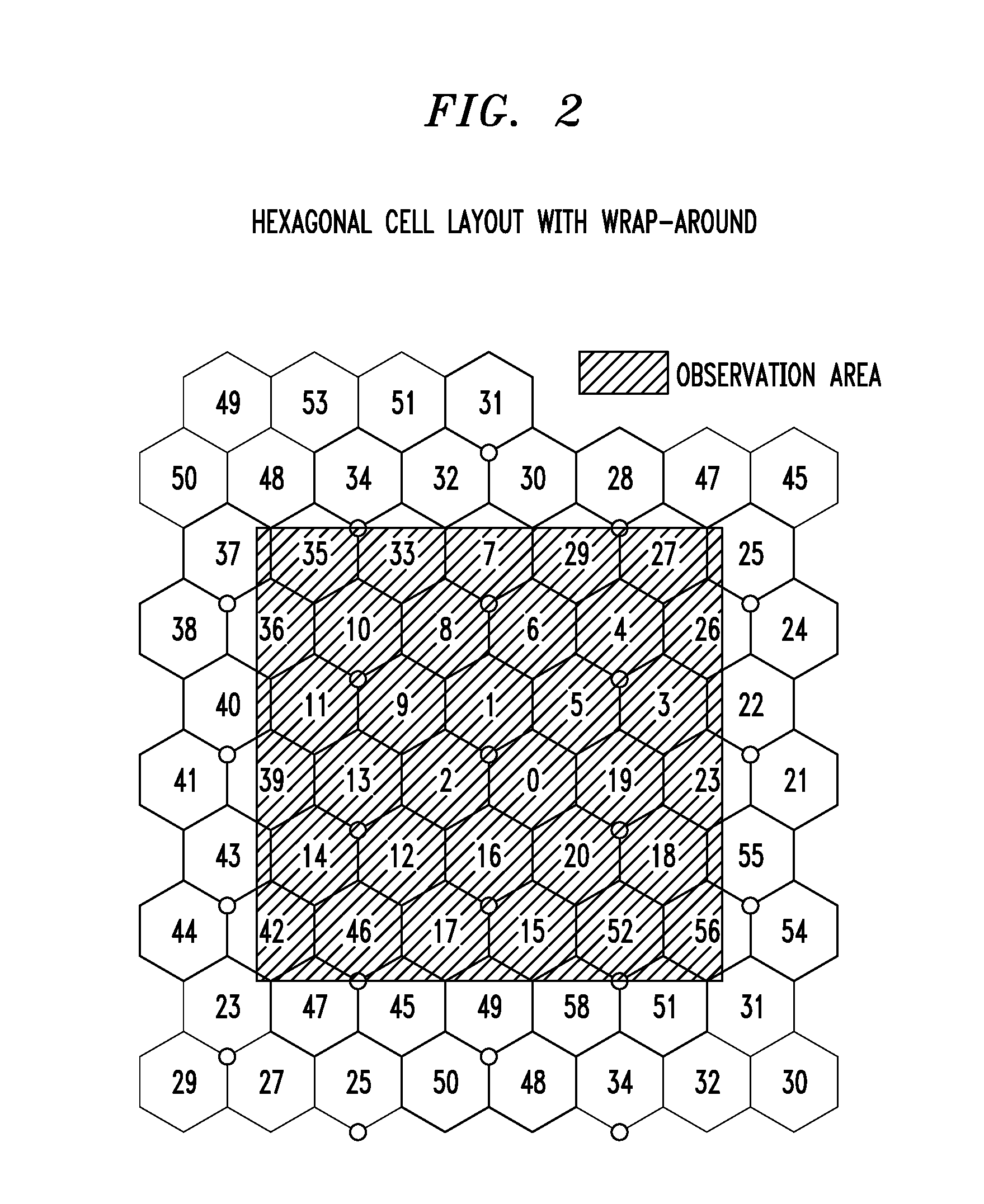Method for reducing interference in a cellular radio communication network, corresponding interference coordinator and base station
a technology of cellular radio communication network and interference coordinator, applied in the direction of transmission, network planning, electrical equipment, etc., can solve the problems of severe performance degradation or even connection loss, waste of precious frequency resources, inter-cell interference, etc., to reduce the overall interference in the network and increase the network capacity.
- Summary
- Abstract
- Description
- Claims
- Application Information
AI Technical Summary
Benefits of technology
Problems solved by technology
Method used
Image
Examples
Embodiment Construction
[0031]In recent years, Orthogonal Frequency Division Multiple Access (OFDMA) has become an attractive transmission technology, which is part of various emerging system standards for broadband cellular communications. Examples include the 3GPP Long Term Evolution (LTE) and 802.16e WiMAX. In OFDMA, mobile terminals are multiplexed in time and frequency. A major problem in these systems is the inter-cell interference, which is caused by neighboring cells when transmitting on the same time and frequency slots. This problem can be solved by using beamforming antennas and coordinating the transmissions among base stations. This is known as interference coordination. In this paper, we present a distributed algorithm for interference coordination, which enhances the cell edge performance with global information provided by a central coordinator. The signaling delay during the communication with the central coordinator can be on the order of seconds, while an additional local interference co...
PUM
 Login to View More
Login to View More Abstract
Description
Claims
Application Information
 Login to View More
Login to View More - R&D
- Intellectual Property
- Life Sciences
- Materials
- Tech Scout
- Unparalleled Data Quality
- Higher Quality Content
- 60% Fewer Hallucinations
Browse by: Latest US Patents, China's latest patents, Technical Efficacy Thesaurus, Application Domain, Technology Topic, Popular Technical Reports.
© 2025 PatSnap. All rights reserved.Legal|Privacy policy|Modern Slavery Act Transparency Statement|Sitemap|About US| Contact US: help@patsnap.com



